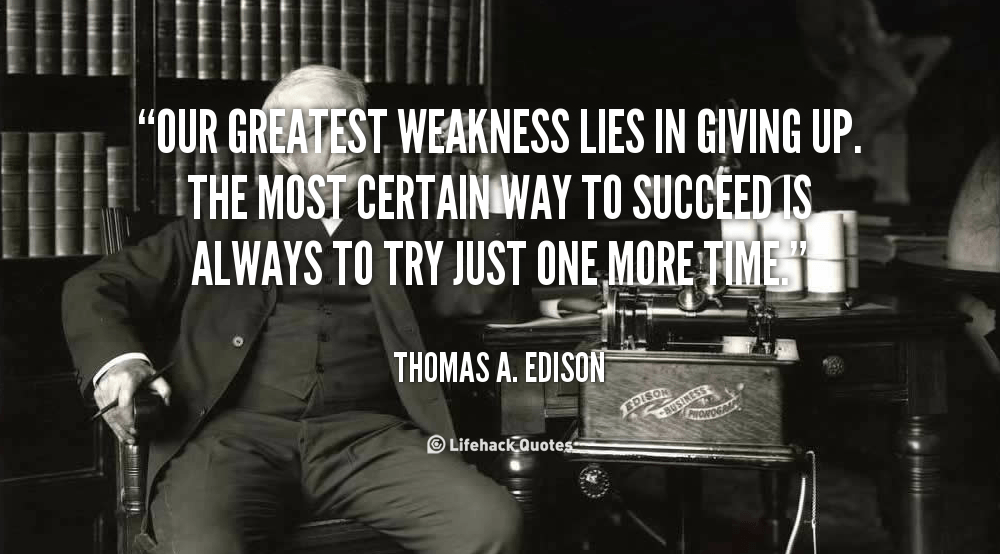Thomas Edison is often remembered as the man who “gave light to the world.” But behind his 1,000+ patents and groundbreaking inventions like the phonograph and electric light bulb was not just genius — it was a relentless system of habits, psychological strategies, and an extraordinary approach to failure.
The Early Challenges
Edison’s life began far from promising. Born in 1847 in Milan, Ohio, he was the youngest of seven children. At school, his teachers quickly labeled him “difficult” and “slow.” After just a few months, his mother, a former teacher herself, pulled him out of the classroom and homeschooled him. Rather than see this as a setback, young Edison developed the first of many habits that would define him: self-education.
Every day, he read voraciously. His mother instilled a belief that knowledge was power, and Edison turned learning into a lifelong, daily habit. By the time he was a teenager, he had read works of Shakespeare, Newton, and Faraday — material far beyond his years.
Habits of Work
Edison’s work ethic became legendary. While many worked a standard 8-hour day, Edison created a different kind of schedule: he lived at his lab. At Menlo Park, his famous “invention factory,” he would often work 16 to 20 hours a day, catnapping in short bursts on a bench or floor.
But this wasn’t reckless overwork — it was purposeful iteration. Edison believed that success was the result of sheer volume of experiments. His famous quote, “Genius is 1% inspiration and 99% perspiration,” wasn’t just a catchy phrase — it was how he lived.
He designed his daily life around structured repetition:
- Idea generation in the morning
- Testing and prototyping throughout the day
- Reflection and documentation at night
By embedding these habits into his routine, Edison removed the need for motivation — work was simply what he did.
Psychological Mastery Over Failure
Edison’s psychological strength was perhaps even greater than his technical knowledge. He viewed failure not as defeat but as data.
When working on the electric light, Edison tested over 6,000 materials to find a suitable filament. Each failure, he said, simply eliminated one more thing that didn’t work. One of his most famous quotes captures this mindset:
“I have not failed. I’ve just found 10,000 ways that won’t work.”
This reframe — turning failures into learning milestones — protected him from the discouragement that paralyzes most people. It was a kind of cognitive reprogramming: where others saw dead-ends, Edison saw signposts guiding him closer to success.
Visualization and Positive Expectation
Long before visualization became a popular psychological tool, Edison practiced a form of it naturally. He was known for pacing around the lab, eyes closed, talking aloud as if his inventions already existed.
He would mentally “see” the workings of a machine before building it. He imagined the way people would use his phonograph before it had been perfected. This technique of mental rehearsal kept his goals vivid and emotionally charged, sustaining motivation during long periods without tangible results.
Mastering Energy, Not Time
While Edison worked long hours, he understood that energy management was more important than time management. He napped strategically, once claiming that a few short naps during the day made him more productive than sleeping a straight eight hours. He believed that ideas often came during the twilight moments between sleep and waking, and he tried to maximize access to that creative state.
Edison even held ball bearings in his hands while napping, so when he drifted into deep sleep, they would fall, wake him up, and allow him to catch ideas floating in the transition from sleep to consciousness — a psychological trick called hypnagogia.
Building a Resilient Environment
Edison surrounded himself with a laboratory culture that prized persistence. His assistants at Menlo Park adopted his rhythms: long hours, endless experiments, and an acceptance that failure was part of the job.
He often said, “Our greatest weakness lies in giving up. The most certain way to succeed is always to try just one more time.”
By embedding this belief system into his environment, Edison created a positive feedback loop: persistence bred success, success bred more persistence.
The Fire That Could Have Ended Everything
In 1914, when Edison was 67 years old, his factory caught fire. Decades of work — prototypes, notes, research — were destroyed overnight. Watching the flames, Edison reportedly turned to his son and said:
“Go get your mother and all her friends. They’ll never see a fire like this again.”
Instead of mourning, he saw an opportunity to start fresh:
“Although I am over 67 years old, I’ll start all over again tomorrow.”
True to his word, Edison rebuilt — and within a year, the lab was fully operational again. This response was the culmination of a lifetime spent cultivating optimism, resilience, and action-oriented habits.
Legacy
When Edison died in 1931, he held 1,093 U.S. patents and left behind inventions that shaped modern life: the electric light bulb, the phonograph, motion pictures, and more. But beyond the devices, his true gift to history was a model of how structured habits, psychological resilience, and mental framing could turn obstacles into stepping stones.
Edison proved that success wasn’t the product of flashes of genius alone — it was the outcome of relentless systems, unbreakable spirit, and a mind trained to see possibility where others saw defeat.
